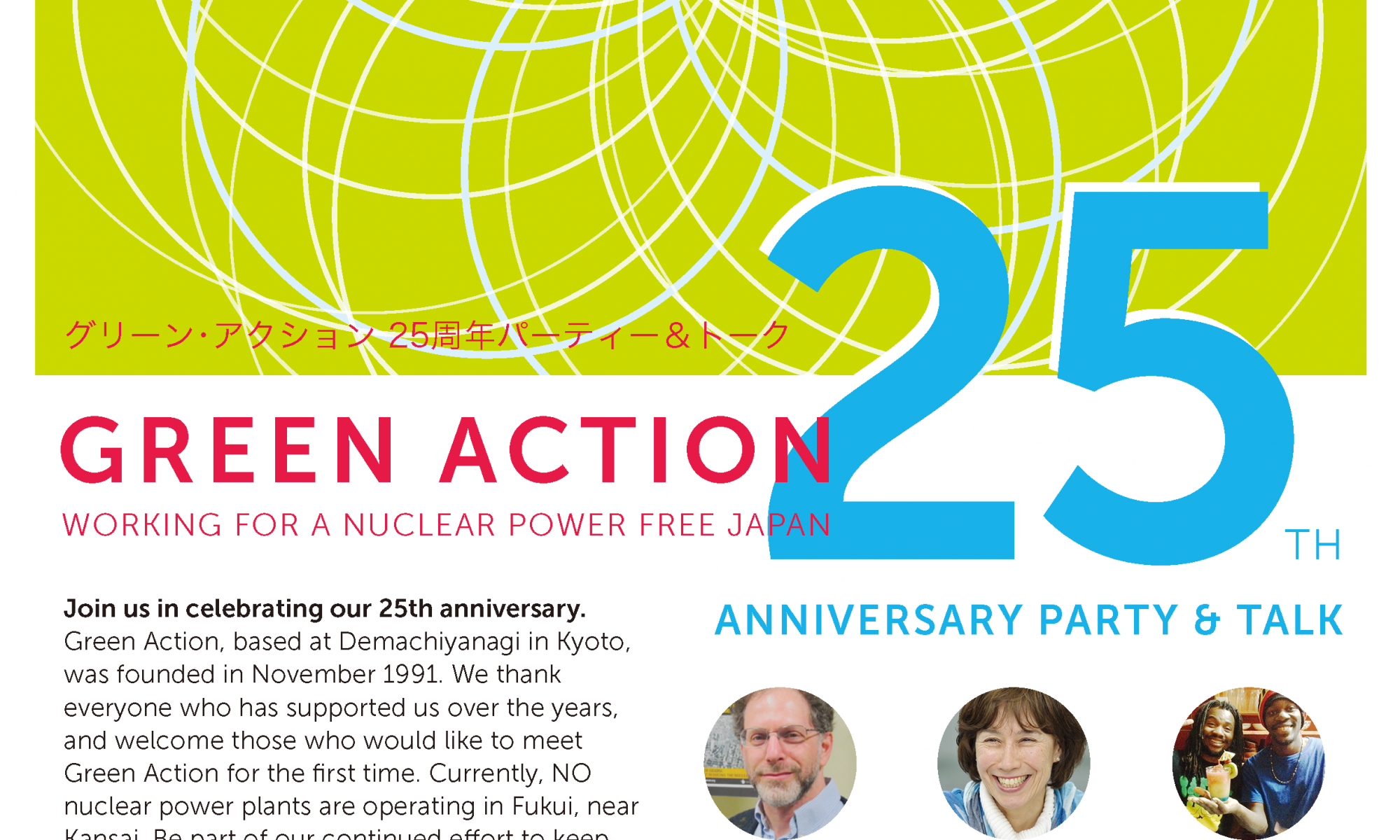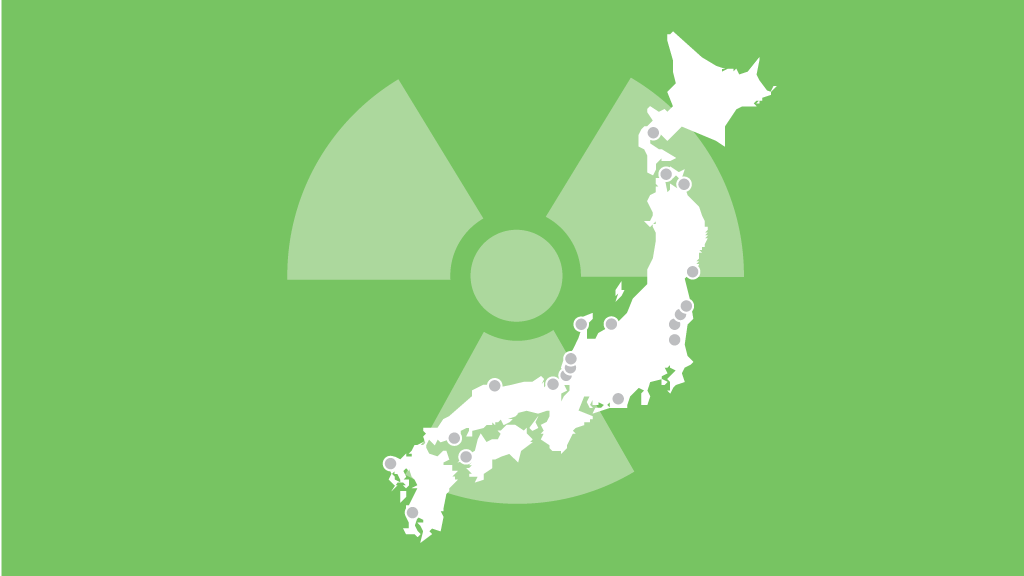Frédéric Patalagoity,
President and Managing Director
AREVA Japan
Urban Toranomon, Bld 5F 1-16-4
Toranomon, Minato-ku
Tokyo 105-0001
Japan
January 28th 2016
Dear Frédéric Patalagoity,
We are writing to you to outline our concerns with the production standards, quality control and, ultimately, safety of AREVA plutonium MOX fuel produced for Japanese utilities. Specifically the planned use of 30 MOX assemblies in the Takahama reactor units 3&4, owned by Kansai Electric.
As you will be aware it is fifteen years since the poor quality control and production standards of plutonium MOX fuel was first disclosed in the case of 8 MOX fuel assemblies manufactured by the then British Nuclear Fuels Limited (BNFL) at Sellafield in the UK, and delivered to the Kansai Electric reactor Takahama unit 4 in Fukui prefecture. As a result of our analysis, based on original quality control data that BNFL were forced to disclose publicly at that time, Green Action and Mihama-no-Kai filed a legal challenge. For two month both Kansai Electric and BNFL denied that the fuel had falsified quality control data. However, in December 1999, one day before the court ruling, Kansai Electric and BNFL were forced to confirm in that plutonium MOX fuel to be used in Takahama 4 contained falsified quality control data. As you know the fuel was returned to the UK and scrapped.
In 1999 and 2000 we produced analysis that showed production and quality control standards for MOX fuel produced using the MIMAS method, including at the Cogema/AREVA Melox plant, were actually of a lower standard than used by BNFL. This was used by a legal challenge to the Fukushima District court on behalf of 1000 plaintiffs in challenging the loading of 32 MOX fuel assemblies into the Fukushima Daiichi unit 3 reactor. The MOX fuel was manufactured using the MIMAS method, under a contract between Tokyo Electric and COMMOX, of which Cogema was a lead agency. While the judgement of the Fukushima District Court did not uphold the lawsuits complaint, the judgement also made clear that quality control data for the MOX fuel should be publicly disclosed. No such data was released by COMMOX in the intervening years. As a consequence of the doubts and controversy over the safety and quality of MOX fuel, Tokyo Electric were prevented from use of the 32 assemblies of MOX fuel until September 2010, six months prior to the March 2011 disaster.
You will also be aware that 28 MOX assemblies delivered to the Kashiwazaki Kariwa nuclear plant in Niigata in 2001, as a consequence of the controversy over the quality and safety of MOX fuel and the opposition of the people of Kariwa, was not loaded into unit 3 as planned. Nearly 15 years later that plutonium fuel remains unused and stored in the cooling pool at the reactor site.
As AREVA sought to restart its MOX business with Japanese utilities the issue of quality control and production standards persisted. Twelve AREVA MOX fuel assemblies, containing 552kg of plutonium were delivered to the Takahama plant in 2010, eight of which were loaded into unit 3. Our analysis at the time found that there were disagreements between AREVA and Nuclear Fuel Industries Ltd (the developer and design code verifier of the MOX fuel and contractor acting on behalf of Kansai Electric and other Japanese power companies). Specifically over the MOX fuel quality and production standards to be used for the manufacture of Japanese fuel at AREVA’s Melox fuel production plant in Marcoule, France, including for Takahama. As a result of AREVA’s production problems, and their intransigence, NFI agreed to AREVA’s insistence that a lower standard of production and quality control would be used for the production of MOX fuel, including for that produced for Kansai Electric. AREVA failed to publicly provide quality control data at this time when challenged by us in 2010.
As you know the safety implications of MOX fuel use are severe. This is made worse by significant problems with the quality control and production standards that exist at the Melox plant.
The MIMAS production technology used at Melox has a multiple problems, including in relation to a fundamental issue for MOX fuel, Thermal Stability. If the plutonium fuel pellets swell under heat alone, and as internal pressure builds up from gaseous fission products, a gas-filled pellet-cladding gap can occur. This has several nuclear safety consequences. Not least that in the event of a loss of coolant accident, the MOX fuel, which may already be fractious, would be further more likely to fragment and “relocate”. The heterogeneous fuel structure can also increase the chance that fuel rods will rupture and block coolant channels if a transient occurs, again potentially impacting cooling function of the reactor core. The reactor safety implications of not being able to sufficiently cool the reactor core fuel are obvious, not least from the meltdown of three reactors at Fukushima Daiichi in 2011. This underscores the importance of achieving the highest nuclear fuel production standards, and applying the most rigorous quality control and inspection. Neither of these are possible at the Melox plant.
The thermal stability problem that exists with Melox produced MOX fuel is but one of multiple concerns we have with plans to operate Japanese reactors with AREVA supplied fuel. The fact that five years after delivery of MOX fuel to Takahama, AREVA has made no effort to provide details on their production and quality control standards is unacceptable to the people of Japan. Already subjected to the consequences of the Fukushima Daiichi accident, the people of Japan are now confronted with the risks of the restart of the Takahama reactor units 3 and 4, to be operated with 24 assemblies and 4 assemblies of AREVA MOX fuel, containing 1,088kg and 184kg of plutonium respectively.
The failure of the Japanese Nuclear Regulation Authority (NRA) to re-assess the risks of MOX fuel use in Japan is deeply regrettable and we have challenged them on this, relying as they do on the reviews conducted by the discredited NISA. At the same time, AREVA as the manufacturer of this substandard product, has a duty to publicly disclose all relevant and original data on the quality control and production standards of its fuel that is about to be used in the Takahama reactors.
It is all the more critical that AREVA release the quality control data for the Takahama MOX fuel, as in 2010 the French nuclear safety regulator, ASN, confirmed to Greenpeace France in relation to the fuel then being shipped to Japan for use in Takahama unit 3, that, “The ASN is not involved in the quality control of production destined for Japanese utilities.” With neither French or Japanese regulators overseeing MOX fuel standards and quality control there clearly are additional major failures and risks from Kansai Electric’s plans to use AREVA MOX fuel. Without a commitment to transparency on this issue, assurances that the fuel is safe to use are meaningless.
We understand that AREVA have multiple threats and challenges to their future business prospects. Securing additional MOX business with Japanese utilities, including new MOX fuel manufacture, must rank high in your priorities given the 16,000kg of plutonium belonging to Japan currently stored in France. This will require the transport of many hundreds tons of MOX fuel from France, including that scheduled for 2016. But we would contend that a failure to put safety first and above commercial interests is in no ones interests, including those of AREVA.
Conducting a nuclear test on the people of Fukui, Kansai region and wider Japan, is never acceptable. As we approach the anniversary of the Fukushima Daiichi accident it is even more reprehensible that AREVA has so far refused to fully disclose all relevant data on its MOX production problems at Melox. We are calling on you to release immediately the actual quality control data for the 30 MOX fuel assemblies about to irradiated in the Takahama reactors.
Yours sincerely,
Shaun Burnie
Senior Nuclear Specialist,
Greenpeace Germany
Aileen Mioko Smith
Executive Director,
Green Action, Kyoto
Hideyuki Ban
Co-Director,
Citizens’ Nuclear Information
Center
Tokyo
Hideyuki Koyama
Director,
Osaka Citizens Against the Mihama,
Ohi and Takahama Nuclear Power Plants
(Mihama-no-Kai)
Osaka
PDF: Letter to AREVA Japan Calling for Disclosure of MOX Fuel Quality Control Data, 2016-01-28
日本語訳


